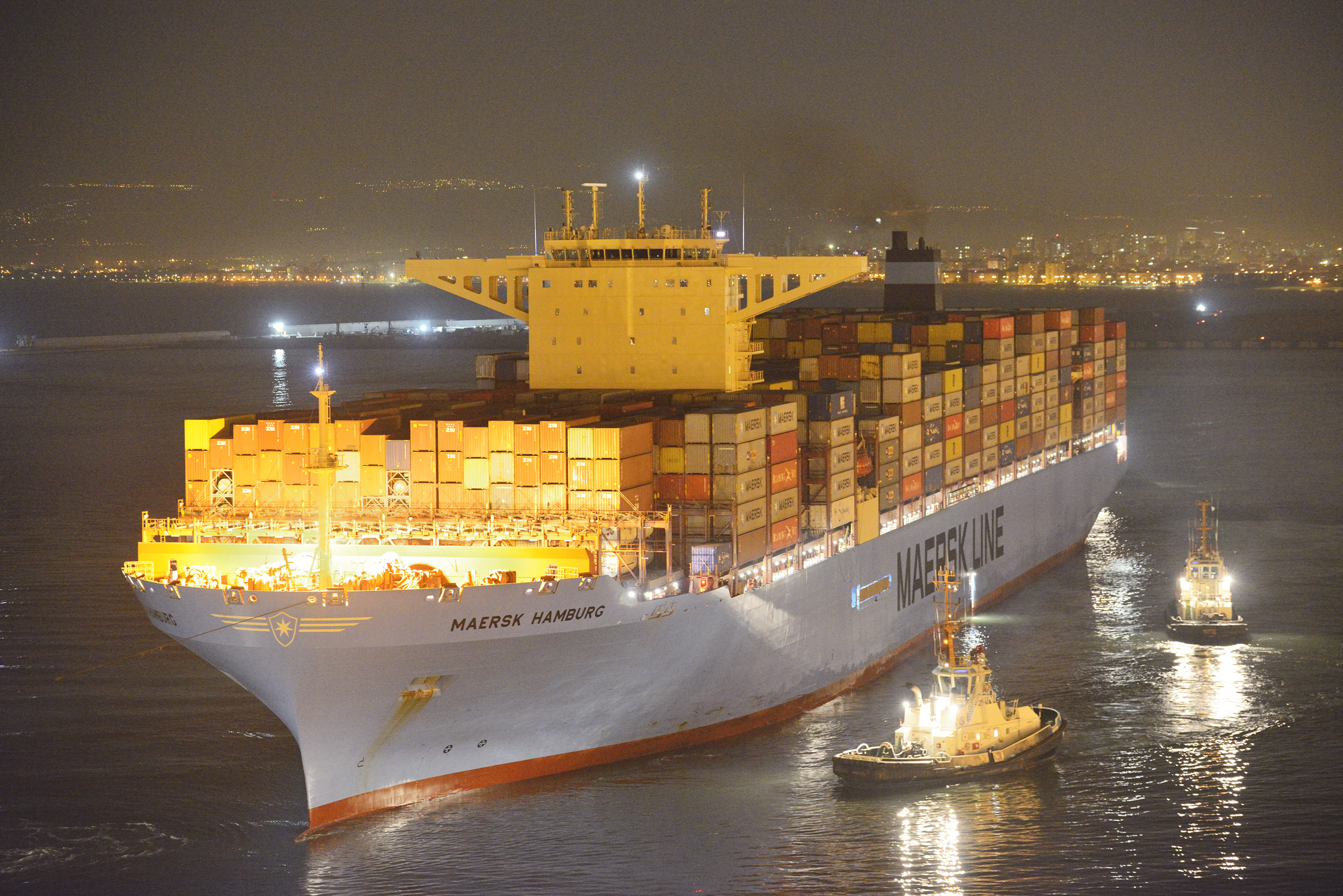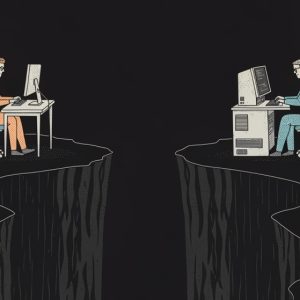
A .P. MollerMaersk, the world’s largest shipping company, has committed to net-zero emissions from its marine operations by 2050. This is one of many strategic objectives that are underpinned by a company-wide technology transformation that was triggered by a cyberattack in 2017. Gavin Laybourne, CIO for strategic brands at the shipping giant, talked Tech Monitor through how data (including from 18,000 sensors in each ship’s engine) is underpinning Maersk’s sustainability and strategic commitments.
Maersk’s net-zero commitment
Maersk is best-known as a shipping company. It has the largest fleet and container capacity in the industry and transports around one-fifth of the world’s seaborne freight. But the company’s chief commercial aim is to establish itself as an end-to-end container logistics provider. It currently operates in 76 container ports, or terminals, and a global network of warehouses.

That is not its only grand ambition, however. Maersk has also announced some equally ambitious sustainability targets, which include a commitment to achieve net-zero carbon emissions from its marine operations by 2050. Its chosen strategy to achieve this is to lead the development of biofuel-powered ocean vessels, which it hopes will set sail in 2030.
Digitisation plays a role in this transformation of Maersk’s fleet, Laybourne explains. “We have 18,000 sensors in the propulsion engine of each of our vessels,” he says. This not only allows engineers to optimise performance in real time, but it also provides a longitudinal picture of every vessel’s performance over the lifecycle from shipyard to retirement. Maersk uses this data to collaborate with shipbuilders on optimal designs for biofuel vessels.
Although the company’s land operations are not included in its net-zero commitment, customers increasingly look to Maersk to help reduce the carbon footprint of their logistics networks. One way it does this is by modelling transport routes. “Analysing that data means we can say to a client, ‘We can replace this road journey with rail or a barge,’ and bring their emissions down,” says Laybourne.
At Maersk, the cutting edge of digitisation in logistics are its ‘reefers’, the refrigerated containers it uses to transport fresh food (Maersk reportedly ships 75% of the world’s avocados, for example). Sensors track the temperature, air quality, and pH balance inside the ‘reefers’, so that food distributors can reassure their customers that the products have been kept in ideal conditions. The system is the first of its kind to have been certified by the US Food and Drug Administration, Laybourne says.
The data transformation behind Maersk’s zero-carbon goal
Maersk’s net-zero ambition is one of many drivers for what Laybourne calls the company’s “data transformation”.
“We’re transforming from moving boxes to moving electrons,” he says. “There are two sides to our business. There’s the physical side of containers and ships and warehouses; then there’s the digital front end, and all the digital processes that sit behind it.”
Of course, like any company approaching its 125th anniversary, Maersk has many layers of legacy “spaghetti” within its technology infrastructure. The company’s current transformation was accelerated by a cyberattack in 2017, which wiped out almost all of its Active Directory back-ups, disrupting business operations for days.

“That was a wakeup call for the whole organisation,” says Laybourne, who joined Maersk after the cyberattack. “We realised that the technology landscape was too complex and started to simplify. But that was really on the edges. A couple of years ago, we launched a true technology transformation.”
This transformation includes a rationalisation of technology infrastructure but also – and more importantly, in Laybourne’s eyes – a reinvention of the company’s technology operating model.
“Instead of IT developing something and handing it over to the business, we’ve established an engineering culture,” he explains. This means giving engineers – whether they are mechanical engineers working on machinery or software developers working on digital systems – the autonomy to solve problems.
“We have engineers leading [technology] product development, not managers.”
The importance of purpose
Maersk‘s net-zero goal is one of many strategic aims that direct Laybourne and his team in their work. “I’m trying to run and transform at the same time, like every CIO. And then you’ve got these strategic narratives of the group, such as decarbonisation and becoming the global integrator of container logistics.”
But that is not to say that the company’s sustainability goals are just another key performance indicator. The company’s commitment to social responsibility provides a sense of purpose that helps Laybourne focus on the bigger picture, he says. “What keeps me awake at night, excitedly, is how I can bring that all together.”






